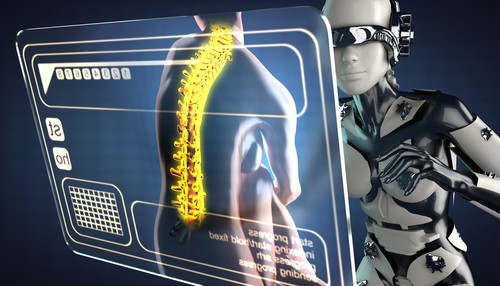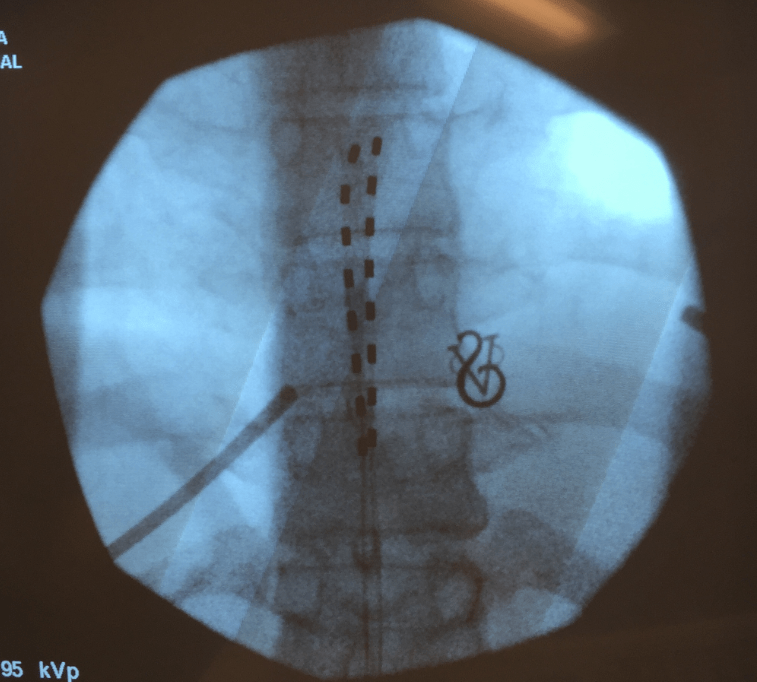
Janet Jay had known nothing but pain since she was 15 years old. She couldn’t even recall a time when she wasn’t in pain. That all changed when, in her own words, she became a cyborg.
She’s not quite on the level of a RoboCop or a Darth Vader just yet, but it’s true that her flesh human body has been upgraded with a machine; the very definition of being a cyborg (and the key difference between cyborgs and robots.)
Jay had a next-generation implant placed on her back that stimulates her spinal cord. The implant overrides the pain receptors in her body so that she doesn’t feel pain, including the pain that she has been stuck with for years.
Figure 1.1: Spinal Cord Stimulator
A spinal cord stimulator implant is placed between the bone and spinal cord to help with pain management. Source: popsci.com
Jay wrote about her experiences in a blog post where she discussed her pain, the implant, and what it’s like to finally have relief from the problem.
Jay is not alone in her journey of pain. The National Center for Health Statistics estimate that around 25.3 million Americans, which represent around 11.2% of all U.S adults, have some form of chronic pain. This chronic pain can impede work and home life and make it difficult for sufferers to lead a normal life. It leaves them feeling depressed and can lead to disability. It’s hardly surprising then that Jay would immediately jump at the chance to try a spinal implant that would give her the relief she so desperately needed.
In her post, Jay discusses the ins and outs of spinal stimulation and gives us an insight into what a life with chronic pain is like. Her journey includes a cast of skeptical doctors, ineffective painkillers, and some thought-provoking questions about what the future holds for us.
She describes her own path to spinal stimulation, sharing details on how the device works with her body to cancel out pain and other problems patients have to deal with.
“Even for me, the battle is not over... Since this surgery I’ve actually had another disc herniate, complicating everything. My spine isn’t cured, and I still hurt all the time. But the pain is more controlled and I can function much better at my current level of discomfort.”
-Janet Jay on how the implants helped her find release
With the costs – both financial and human – of the opioid crisis continue to spiral out of control, spinal stimulation like this could become more popular. Unfortunately, the implant comes with a pretty hefty cost. Jay says she was lucky that her insurance covered most of the cost of the procedure, which was in the six-figures.






Leave a Reply
Thank you for your response.
Please verify that you are not a robot.